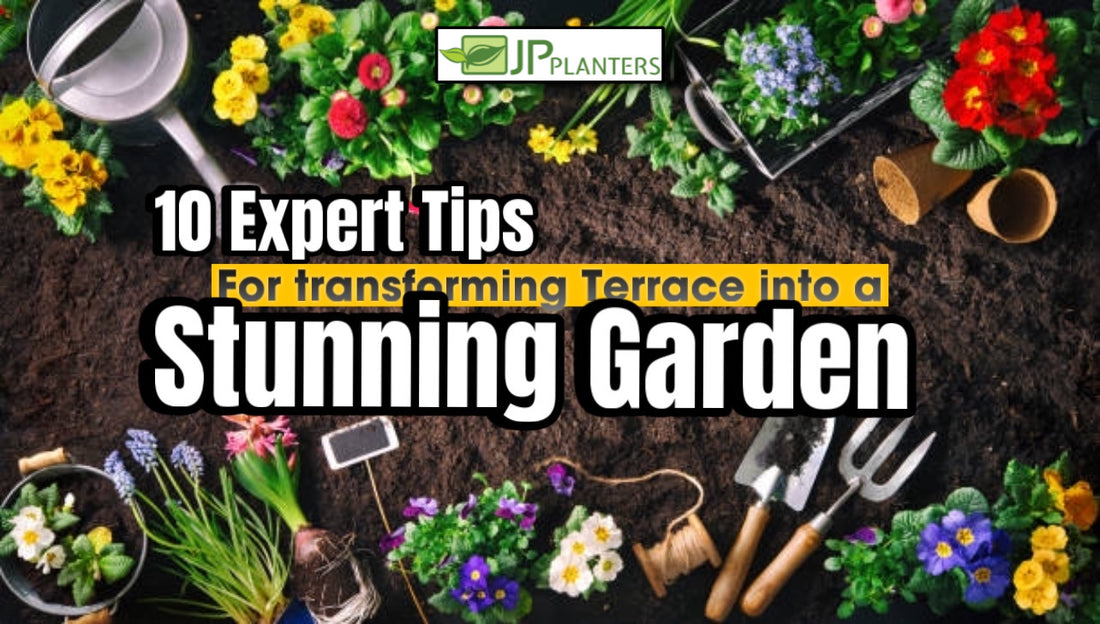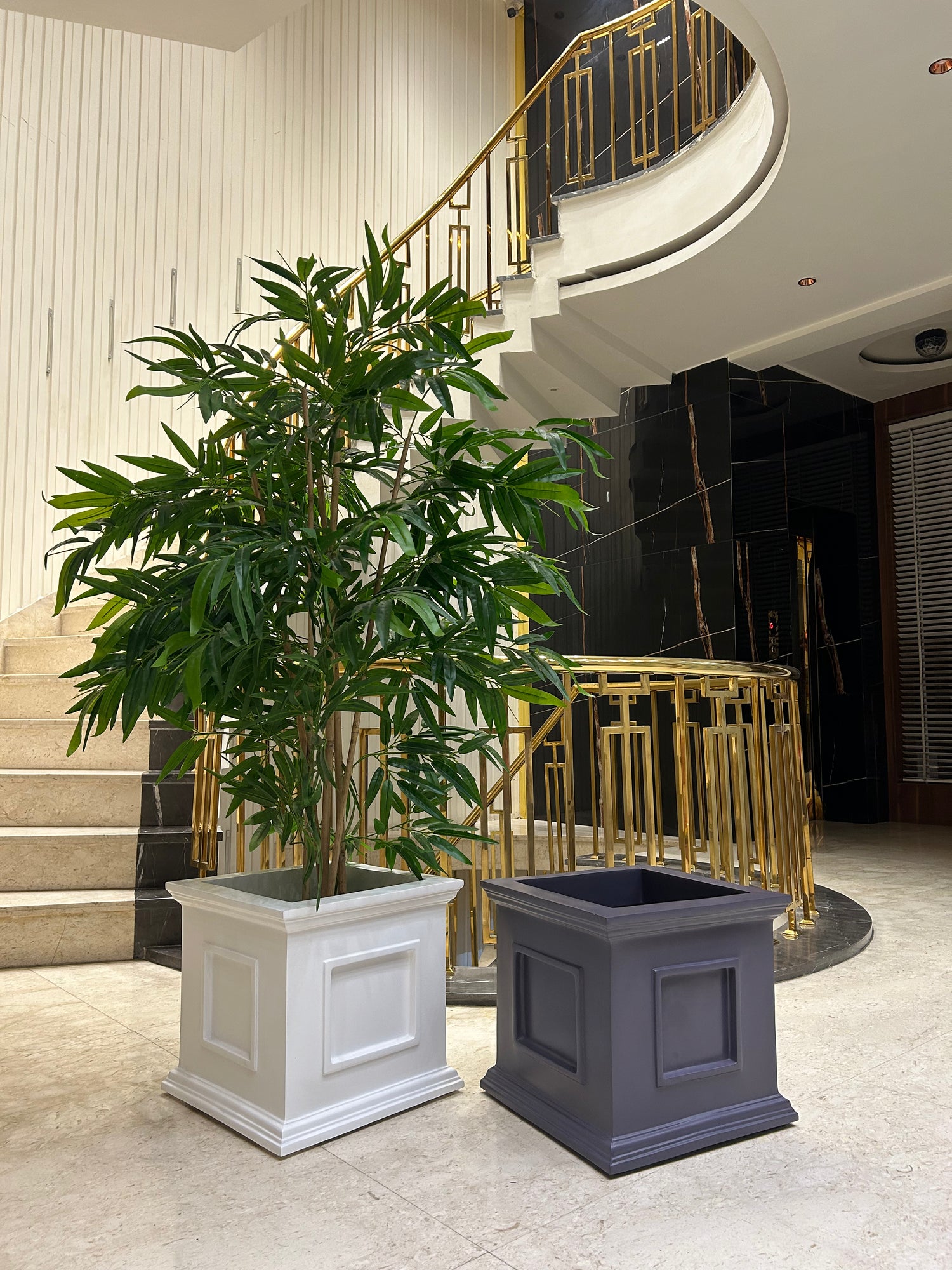
10 Expert Tips for Transforming Terrace into a Stunning Garden
Share
Transforming your terrace into a stunning garden can be a game-changer for your outdoor space. From creating a peaceful oasis to a vibrant entertaining area, there are countless possibilities to explore. In this article, we will share 10 expert tips to help you make the most of your terrace and turn it into the garden of your dreams.
Our brand voice is friendly and informative, so we will guide you through each step with easy-to-understand explanations and practical advice. From selecting the perfect plants to optimizing the use of space, we will cover everything you need to know to achieve a beautiful and functional terrace garden.
Whether you have a small balcony or a spacious rooftop, our tips will empower you to create a green haven in the heart of your urban dwelling. So, if you're ready to take your terrace to the next level, keep reading for our expert advice on transforming your terrace into a stunning garden.
1. Plan Your Space Efficiently
When we are planting on a terrace one of the most important things is to efficiently plan our garden space to make it look beautiful as well as there is space for you to enjoy your terrace garden. Right? For that we need to take care of these things while planning Gardening on Terrace.
- Assess Sunlight Exposure: Determine how much sunlight each area of your terrace receives throughout the day. This will help you decide where to place plants that need full sun versus those that prefer shade.
- Designate Zones: Create different zones for various purposes, such as a dining area, a relaxation corner with a hammock, and a dedicated section for plants. Use rectangular planters to delineate these zones.
- Consider the Wind: Terraces are often exposed to wind, which can damage delicate plants. Use windbreaks like bamboo screens or place big size pots with sturdy plants to shield more fragile species.
2. Choose the Right Plants for Your Terrace
Selecting the right gardening plants is crucial for a thriving terrace garden. Consider the amount of sunlight your terrace receives and choose plants accordingly. For bigger plants you will need bigger Planters, where your plants can thrive freely.
- Hardy Perennials: Incorporate hardy perennials like lavender, thyme, and ornamental grasses, which are low-maintenance and can withstand varying weather conditions.
- Evergreens for Year-Round Greenery: Add plants for outdoor that stay green all year, such as boxwood or juniper, to maintain a lush look even in winter.
- Container-Friendly Plants: Select gardening plants that thrive in containers, such as herbs, small shrubs, and certain types of flowers, ensuring they have enough space in garden planters.
3. Incorporate Different Types of Planters
Gardening on Terrace is not easy, there are a lot of things that a gardener needs to keep in mind while gardening. Incorporating different types of planters is one of the most important parts for giving your plants a beautiful look and making your garden more attractive.
- Material Matters: Consider FRP planters for their durability and modern aesthetic. They’re resistant to weathering and come in various shapes and sizes to suit your design needs.
- Self-Watering Planters: These are ideal for busy individuals or for when you're on vacation. Self-watering garden planters ensure your plants get the moisture they need without daily attention.
- Mix and Match: Combine big size pots with smaller containers to create visual interest. Use rectangular planters for herbs and vegetables, while reserving big size pots for focal plants like dwarf trees.
4. Create Levels with Vertical Gardening

If your terrace is small, Vertical Gardening can help maximize your space. Install trellises or wall-mounted garden planters to grow climbers like jasmine, morning glory, or ivy.
- Trellises and Climbers: Attach trellises to your walls and train climbers like clematis, honeysuckle, or passionflower. These not only save space but also add height and greenery to your terrace.
- Hanging Planters: Use hanging garden planters for trailing plants like ivy or petunias. This adds another vertical layer and brings plants closer to eye level.
- Tiered Plant Stands: Invest in tiered stands to place rectangular planters or pots of varying heights. This method works well for creating a layered look without needing extensive floor space.
5. Add Cozy Seating Areas
No terrace garden is complete without a cozy seating area where you can relax and enjoy your green space. Choose comfortable outdoor furniture that complements the natural beauty of your garden. Keep these points in your mind while you purchase furniture -
- Weather-Resistant Furniture: Choose outdoor furniture made from materials like teak, metal, or resin wicker that can withstand the elements and require minimal maintenance.
- Integrate Seating into Planters: Consider built-in seating that doubles as a planter. For example, benches with planters at the ends can be filled with plants for outdoor use to create a seamless garden experience.
- Shade Solutions: Add umbrellas or pergolas to provide shade in your seating areas, making them more comfortable during hot summer days.
6. Enhance Aesthetics with Decorative Elements
- Lighting: Use solar-powered lights to highlight pathways or place lanterns around your terrace for a warm glow in the evenings. Pair them with gardening decoration like reflective ornaments or wind chimes for added charm.
- Water Features: Incorporate a small fountain or birdbath as a centerpiece. The sound of water adds a calming effect and attracts birds, bringing your garden to life.
- Themed Decorations: Choose a theme for your terrace garden, such as Mediterranean, Japanese Zen, or tropical, and select gardening decoration elements that reflect this theme.
7. Implement a Proper Irrigation System
Maintaining a lush terrace garden requires a proper watering system. Depending on the size of your garden, you can opt for a simple watering can or a more advanced drip irrigation system. For large garden planters and big size pots, ensure that they have proper drainage holes to prevent waterlogging, which can damage plant roots.
- Drip Irrigation: Install a drip irrigation system for efficient watering that minimizes water wastage and ensures each plant receives adequate moisture.
- Rainwater Harvesting: Set up a rainwater harvesting system connected to your irrigation setup. It’s an eco-friendly way to water your garden and can be stored in a decorative container.
- Automatic Timers: Use timers with your irrigation system to water your gardening plants at optimal times, especially early in the morning or late in the evening when evaporation rates are lower.
8. Use Lightweight and Durable Planters
Since you’re going to do gardening on terrace there are some important things you might look at. As Gardening on terrace means you have to move planters on upper floors, the weight of your planters is an important consideration. With these the planters are going to be outside and they are going to face different weather conditions too. Keeping that in mind, we’ve the most amazing planter collection for you which we call….
- FRP Planters: As mentioned, FRP planters are perfect for terrace gardening due to their lightweight yet durable nature. They are easy to move, allowing you to rearrange your garden layout as needed.
- Insulated Planters: For regions with extreme temperatures, consider insulated planters that protect roots from excessive heat or cold.
- Modular Planters: Opt for modular planter systems that can be stacked or arranged in various configurations, offering flexibility in design.
9. Incorporate Seasonal Plants
To keep your terrace garden looking fresh and vibrant year-round, incorporate seasonal plants. Gardening plants that bloom in different seasons will ensure that your garden always has something new to offer.
- Rotating Crops: Change up your gardening plants according to the seasons. Spring and summer are ideal for vibrant flowers and vegetables, while autumn and winter can be enhanced with evergreens and winter-blooming flowers.
- Bulbs and Annuals: Plant bulbs like tulips, daffodils, and crocuses in the fall for a burst of color in spring. Annuals can be rotated out each season to keep the garden looking fresh.
- Miniature Trees: Dwarf fruit trees can add both beauty and functionality, producing fruits like lemons, limes, or apples. These are ideal for big size pots.
10. Maintain and Prune Regularly
Finally, to keep your gardening on terrace look beautiful you need regular maintenance to keep it in top shape. Prune your plants regularly to promote healthy growth and prevent them from becoming overgrown.
- Pest Control: Regularly inspect your plants for pests such as aphids or spider mites. Use organic sprays or introduce beneficial insects like ladybugs to control infestations.
- Soil Health: Regularly check the soil in your garden planters and big size pots. Add compost or organic fertilizers to keep the soil rich in nutrients.
- Rejuvenate Planters: Every few months, consider replacing the top layer of soil in your rectangular planters and FRP planters to keep the nutrients replenished and the plants healthy.
Additional Tips:
- Use vertical space. If you have limited space on your terrace, consider using vertical planters or hanging baskets.
- Add a water feature. A small fountain or birdbath can add a touch of tranquility to your garden.
- Create a cozy seating area. Add a comfortable chair or bench and a small table to create a place to relax and enjoy your garden.
- Incorporate different textures. Use a variety of plants with different textures to add interest to your garden.
- Get creative with your planters. You can use anything from old buckets to wine barrels as planters.
- Add some personal touches. Incorporate items that reflect your personality and style to make your garden truly unique.
Conclusion
Transforming your terrace into a stunning garden is a rewarding project that enhances your living space and provides a tranquil outdoor escape. By carefully selecting gardening plants, choosing the right garden planters, and incorporating decorative elements, you can create a beautiful and functional garden that reflects your personal style. Gardening on Terrace is not easy as it seems, it takes a lot of hard work. Remember to plan your space efficiently, maintain your garden regularly, and enjoy the process of watching your terrace garden flourish.





